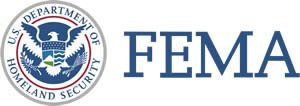RSS feed source: Federal Emergency Management Agency
ST. LOUIS – The two Disaster Recovery Centers in St. Louis County are scheduled to close permanently on Thursday, July 24 at 7 p.m.
The three Disaster Recovery Centers in the City of St. Louis are staying open.
At all locations, FEMA and the U.S. Small Business Administration are helping impacted residents with their disaster assistance applications, answering questions, and uploading required documents.
St. Louis County Locations – Closing July 24LOCATIONSHOURS OF OPERATIONSt. Louis County Library
Mid-County Branch
7821 Maryland Ave.
Clayton, MO 63105Monday–Thursday: 8 a.m.- 7 p.m.
Friday: 8 a.m.-5 p.m.
Saturday: 9 a.m.- 4 p.m.
Sunday: Closed
Closing Permanently: Thursday, July 24 St. Louis County Library
Prairie Commons Branch
915 Utz Ln.
Hazelwood, MO 63042Monday–Thursday: 8 a.m.- 7 p.m.
Friday: 8 a.m.-5 p.m.
Saturday: 9 a.m.- 4 p.m.
Sunday: Closed
Closing Permanently: Thursday, July 24
You can visit any Disaster Recovery Center, no matter where you are staying now.
Three additional Disaster Recovery Centers are open in St. Louis City to assist residents and businesses affected by the May 16 tornado and storms.
St. Louis City Locations – Staying OpenLOCATIONSHOURS OF OPERATIONUnion Tabernacle M.B. Church
626 N. Newstead Ave.
St. Louis, MO 63108Monday-Friday: 8 a.m.-7 p.m.
Saturday: 9 a.m.-4 p.m.
Sunday: ClosedUrban League Entrepreneurship and
Women’s Business Center
4401 Natural Bridge Ave.
St. Louis, MO 63115Monday-Friday: 8 a.m.-7 p.m.
Saturday: 9 a.m.-4 p.m.
Sunday: ClosedSumner High School — Parking Lot
4248 Cottage Ave.
St.
Click this link to continue reading the article on the source website.


